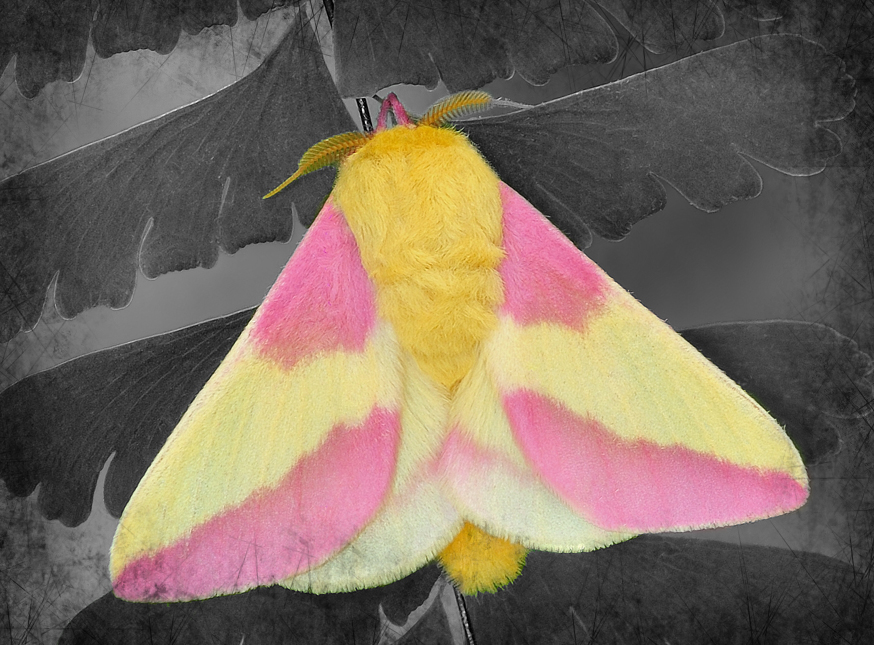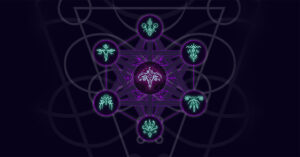The Kaleidoscopes are one of the most fascinating features of Chrysalis. They can be used to examine the world, its secrets, and its occurrences, from various perspectives. The Kaleidoscopes can also be used to figure out one’s personality through how much of each Kaleidoscope it contains. The Kaleidoscopes are partially dependent on time period and view of the world and they are not intended to necessarily remain the same through the times; neither are they intended to be a precise definition of anyone’s personality, although the more devout will surely find much to study in them, as well as entertainment. How, then, does one use these aspects?
The Kaleidoscopes of the Chrysalis Path are:

Lamproptera

Dryocampa

Parthenos

Actias

Cerancia

Trogonoptera
However, this is not all. The Supreme Six are the main Kaleidoscopes, but there is more…
The Kaleidoscopes as providers of perspective
The term ‘kaleidoscope’ has multiple meanings. Naturally, it refers to the kaleidoscope itself, a type of optical item by looking into which and turning it one can see various symmetrical shapes; the word ‘kaleidoscope’ derives from Greek: kalos ‘beautiful’, eidos ‘image’ or ‘form’, and skopein ‘see’. This is how the function of the Kaleidoscopes can be seen as well. They are a kind of avenue to examine things from many different angles. When a matter or concept at hand is “turned” and looked at from different perspectives, it becomes possible to perceive different sides, different shapes to the matter. At best, the Kaleidoscopes can help see something very positive in what appears to be a negative thing.
The Kaleidoscopes can also be used to transform labels set by our minds. As by turning the kaleidoscope we can, through mirrors, see the same shapes form new figures, in Chrysalis we can flip the label “I’m too loud” into the counter-label “I’m social and communicative”. A good example of pure Kaleidoscope use is the opposition to slut-shaming and matters around it. For instance, a woman who receives a bad reputation for her elevated sexuality is, from the point of view of Lamproptera, a dazzling Chrysalid who knows how to find her pleasure in a way that suits her.
The Kaleidoscopes as descriptors of personality
The other primary function of the Kaleidoscopes is to act as ‘houses’ or groupings based on personalities or ways to view reality. Again, the term has a deeper meaning; whereas a flock of crows is called a ‘murder’, a swarm of butterflies is called a kaleidoscope. So, for instance, the Kaleidoscope of Actias could be thought of as a flock of people who perceive the world through the reality of magic and mysticism.
The Kaleidoscopes act in unison. Everybody has characteristics of each Kaleidoscope, and the full picture of our personality is formed by the proportions in which they occur. Usually, we have two or three principal Kaleidoscopes that form the nucleus of our personality. The ratios of the Kaleidoscopes to each other also have an effect. For example, a Dryocampa-Trogonoptera might be a very humane, compassionate, and understanding person, but one who has suffered much and is prone to depression and victim mentality, whereas a Trogonoptera-Dryocampa might be a cool rebel deviating from social norms, cunning and skilled at pulling people’s strings, even if empathy might not be a dominant trait. An Actias-Ceranchia would be a spiritual coach roaming somewhere deep in the clouds of the spirit realm, loving yoga and studying the chakras, while a Lamproptera-Actias could be a hedonistic High Priestess who finds sexual magic a pleasant way to give life more meaning.
Telea-Chrysalids initiated into the Temple can pick a Kaleidoscope, if they so desire, and immerse themselves in its study in order to share their observations with other Chrysalids.
Author: Luminary Blackthorn
Translation: Telea Heosphoros








No comment yet, add your voice below!